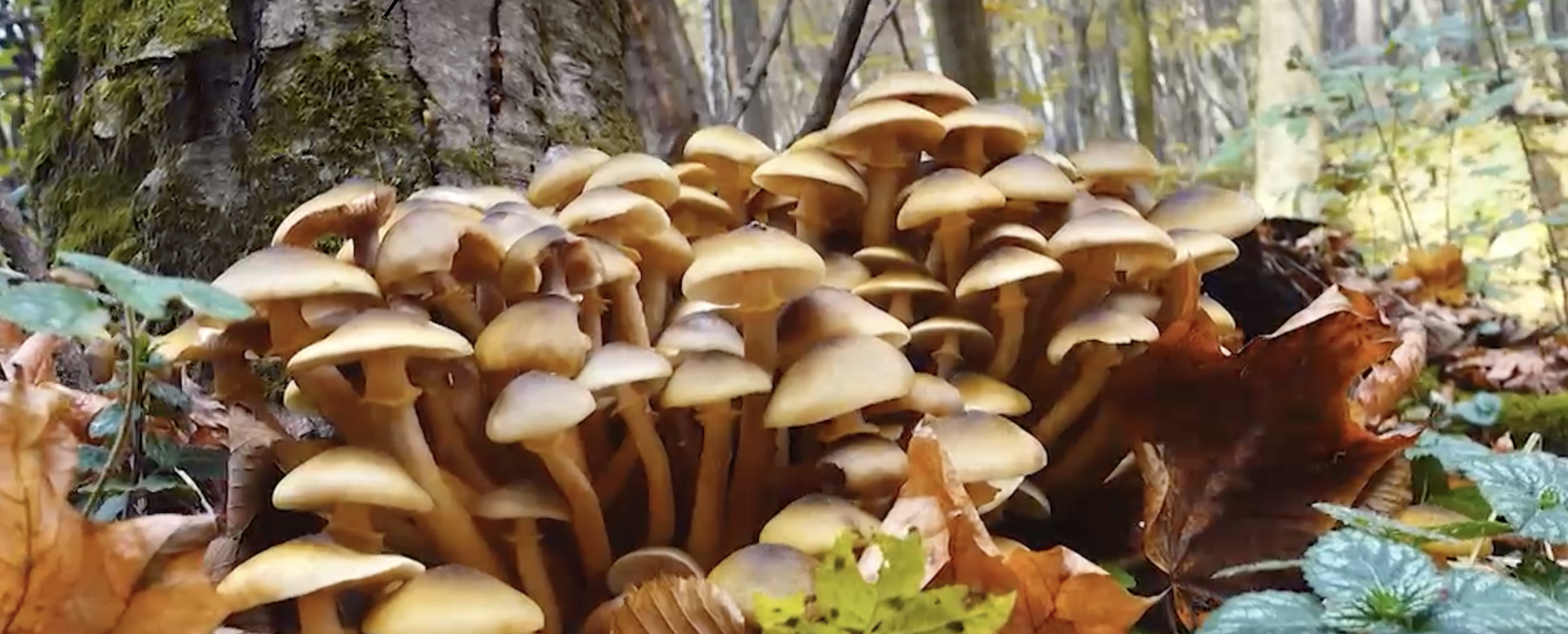
This lesson will explore the phenomenon of fungal networks in the city of Crystal Falls, MI to help students learn some of the science of the fungi kingdom. They will learn how fungi help plants to communicate with each other and contribute to everyday foods we enjoy. Learners will engage in experiments to investigate the factors that affect mold growth on bread, how temperature influences yeast growth, and create a model to explain fungal networks.

Lesson Objectives
- Know about the large fungal network in Crystal Falls
- Understand how fungi are involved in our everyday lives through foods and medicines that we enjoy
- Be able to investigate the factors that affect the rate at which bread goes moldy and how temperature affects yeast growth
View the entire lesson plan including teacher background information, worksheets and more below or download for free here.
Activity 1
This activity is a video discussion of a Great Lakes Now episode segment that discusses one of the largest and oldest living organisms in the world — a fungus in the woods of Crystal Falls, MI. During the video students need to jot down four things they took away from it.
Watch a Great Lakes Now Segment
Activity 2
This activity aims to provide students further understanding of the importance of fungi by spotlighting a festival that centers on a rare mushroom that people regard as a delicacy — the morel.
Read About the National Morel Festival
Activity 3
Many of us have encountered a moldy slice of bread, but what is going on when bread goes bad and what factors contribute to the molding of bread? The purpose of this experiment is for students to investigate factors that affect mold growth on bread.
Activity 4
Many bread recipes call for yeast to help the bread rise. The yeast consumes the sugars in the bread mixture and produce carbon dioxide, the same gas that people exhale, that get strapped in the bread forming little bubbles and puffing up the bread, or helping it to rise.
Are there better conditions, such as an optimal temperature, for yeast to cause bread to rise? The purpose of this activity is for students to investigate the effect that temperature has on the growth of a single-celled fungi — yeast.
Activity 5
The purpose of this activity is for students to create a model that will communicate how fungal networks, like the one featured in the
Great Lakes Now segment come about and function.
Check out Great Lakes Now’s segment on fungi and the other segments featured in Episode 2204: Mushrooms and Mobsters on this month’s landing page.
If you use this lesson or any of its activities with your learners, we’d love to hear about it! Contact us with any feedback or questions at: GreatLakesNow@DPTV.org




